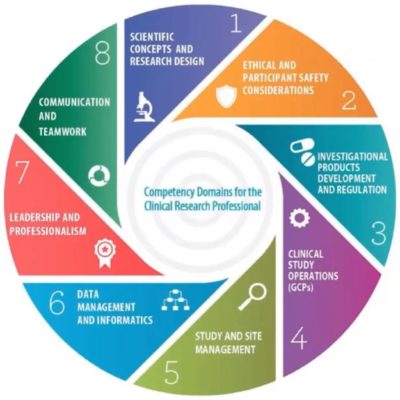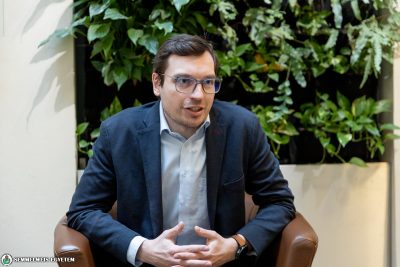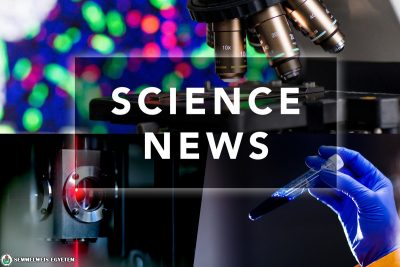The conscious use of social media and the opportunities offered by other online services play an increasingly important role in the communication of scientific results related to Semmelweis University. In order to get to know and exploit these, the university organized a webinar entitled “Social Media in Science Communication”.
The purpose of the program was to help researchers who want to disseminate their scientific results even more widely on the Internet, and who are open to learning and using new online platforms. Nine presentations were held at the webinar lasting nearly six-hours, where participants also received practical advice on the conscious use of social media, as well as learning about the benefits of creating a personal website. The event was organized by the Directorate of Communication and Event Management and the Innovation Center.
“The scientific results associated with the university play an important role in strengthening the reputation of Semmelweis University and its position in rankings, but at the same time these results must be communicated and be made visible as well”, said Zenina Sági.
The deputy director of the Directorate of Communication and Event Management, who is also one of the organizers of the training, emphasized that the use of social media and Web 2.0 is gaining ground in this communication. This may strengthen the scientific reputation of university researchers, in addition to that of the institution and is becoming more and more preferred in informal networking as well. She added that although many people are aware of the existence of these media platforms, they do not use them, or if they do, they do not consciously use them. Therefore, they do not exploit all the opportunities offered by these platforms.
“As the university has the advantage of increasing the presence of its own researchers in the short and medium term, we thought it was worthwhile to support the social media presence of university staff members with a training”, Zenina Sági said.
“Social media has now become an indispensable marketing tool for physicians, scientists and researchers as well”, emphasized Dóra Szepesi, social media manager at the Rector’s Office.
In her presentation entitled “The Importance of Web 2.0 and Social Media – Foreign and Domestic Panorama”, she presented how and for what purposes different social media platforms such as Facebook, Instagram, YouTube, Twitter, LinkedIn can be used. She emphasized that using them correctly and consistently may result in the achievement of several objectives at the same time.
In his presentation “Twitter and LinkedIn at the Service of Science Communication”, Dr. Bertalan Meskó, medical futurist spoke about the fact that with the digitization of medicine, social media is playing an increasingly important role in healthcare, which has now become part of everyday communication. He emphasized that patients have a natural need to obtain as much comprehensible information as possible about their illness. Therefore, it is of key importance for physicians to be aware of the opportunities related to the information available on the Internet, with all its advantages and disadvantages. He also spoke about the fact that telemedicine will become the new standard as technologies improving patient-physician relationship are becoming more and more important.
Dr. Andrea Fekete, head of the SE-MTA Momentum Diabetes Research Group, Dr. Csaba Bödör, senior researcher at the 1st Department of Pathology and Experimental Cancer Research and Dr. Pál Maurovich-Horvat, director of the Medical Imaging Center spoke about the topic from the researchers’ point of view. In their presentation“Good Practices from Semmelweis University”, through personal examples they presented science can harness different channels of social media. They also gave specific advice on what to pay attention when planning each post. Twitter was singled out as one of the most important channels of scientific communication.
In her presentation “Creating a Personal Website in a University System”, Zenina Sági, deputy director of the Directorate of Communication and Event Management spoke about how a personal website can be both a tool for strengthening scientific reputation and also for informal networking. After outlining the possible contents, she introduced the Semmelweis Scholar system, which has been running since 2015, which provides university researchers with their own, easy-to-use website based on WordPress.
In her presentation“The Relationship between Social Media and Press Communication”, Eszter Kovács, director of the Directorate of Communication and Event Management presented how publishing scientific news in an understandable and simple form may reach a much larger target audience. She outlined how the directorate may support this process and through the example of H-UNCOVER she showed how the population can be involved in generating scientific results. She also talked about how Facebook can support science communication and mentioned the dangers of fake news.
Tamás Kiss, digital consultant and speaker at Grow with Google spoke about how search engine optimization (SEO) can be used to support communication. In order for a website to appear on the first page of the most relevant search result listings for Google and other search engines, one needs a responsive, search-friendly, or search engine-optimized website. This will make our website accessible to many more visitors. In his presentation, he shared practical advice specifically from a SEO perspective regarding the content and technical structure of a website.

Dr. Gyula Szigeti, director of the Innovation Center presented the relationship between science communication and innovation through international examples. In his presentation, he also highlighted the fact that nowadays researchers and scientists communicate their results in an inappropriate way, which may cause many problems. He shared suggestions and advice on solving such problems.
In his presentation “Open Access and ResearchGate”, Péter Szluka, director of the Central Library described how open access publishing was developed, and he also discussed its opportunities and consequences. He highlighted the ResearchGate scientific community site, developed specifically for the scientific community, showcasing its benefits.
The final presentation was held by Daniel M. Russell, senior research scientist at Google, who introduced Google’s services to help researchers. In his presentation, he described the proper and effective use of Google Scholar, Google’s scientific search engine, and talked about its advantages over other similar services.
About 170 participants, mostly young researchers, registered for the program.
Bernadett Bódi
Featured image (illustration): pixabay
Translation: Katalin Illés-Romhányi


